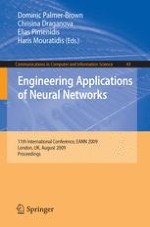2009 | OriginalPaper | Buchkapitel
A Neural Network Computational Model of Visual Selective Attention
verfasst von : Kleanthis C. Neokleous, Marios N. Avraamides, Costas K. Neocleous, Christos N. Schizas
Erschienen in: Engineering Applications of Neural Networks
Verlag: Springer Berlin Heidelberg
Aktivieren Sie unsere intelligente Suche, um passende Fachinhalte oder Patente zu finden.
Wählen Sie Textabschnitte aus um mit Künstlicher Intelligenz passenden Patente zu finden. powered by
Markieren Sie Textabschnitte, um KI-gestützt weitere passende Inhalte zu finden. powered by
One challenging application for Artificial Neural Networks (ANN) would be to try and actually mimic the behaviour of the system that has inspired their creation as computational algorithms. That is to use ANN in order to simulate important brain functions. In this report we attempt to do so, by proposing a Neural Network computational model for simulating visual selective attention, which is a specific aspect of human attention. The internal operation of the model is based on recent neurophysiologic evidence emphasizing the importance of neural synchronization between different areas of the brain. Synchronization of neuronal activity has been shown to be involved in several fundamental functions in the brain especially in attention. We investigate this theory by applying in the model a correlation control module comprised by basic integrate and fire model neurons combined with coincidence detector neurons. Thus providing the ability to the model to capture the correlation between spike trains originating from endogenous or internal goals and spike trains generated by the saliency of a stimulus such as in tasks that involve top – down attention [1]. The theoretical structure of this model is based on the temporal correlation of neural activity as initially proposed by Niebur and Koch [9]. More specifically; visual stimuli are represented by the rate and temporal coding of spiking neurons. The rate is mainly based on the saliency of each stimuli (i.e. brightness intensity etc.) while the temporal correlation of neural activity plays a critical role in a later stage of processing were neural activity passes through the correlation control system and based on the correlation, the corresponding neural activity is either enhanced or suppressed. In this way, attended stimulus will cause an increase in the synchronization as well as additional reinforcement of the corresponding neural activity and therefore it will “win” a place in working memory. We have successfully tested the model by simulating behavioural data from the “attentional blink” paradigm [11].
